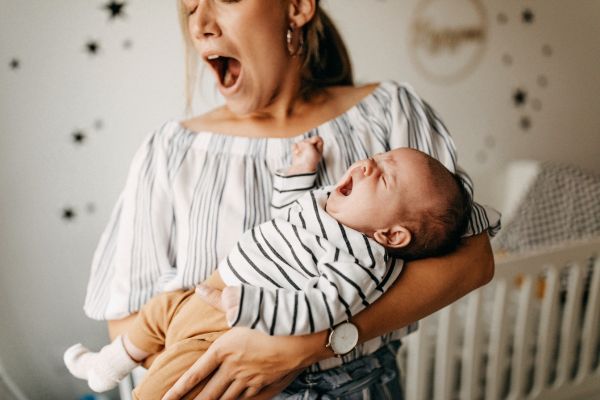Breastfeeding is a deeply personal journey, and every baby’s feeding needs are unique. While nothing can replicate the closeness of nursing, many parents find themselves searching for the best bottles for breastfed babies that support both breastfeeding and bottle feeding seamlessly. Whether you’re returning to work, sharing feeding duties with a partner, or simply need a break, choosing the right bottle can make all the difference in maintaining a successful breastfeeding routine.
Why Choosing the Right Bottle Matters for Breastfed Babies
Transitioning between breast and bottle can sometimes confuse babies, especially if the bottle design does not mimic the natural breastfeeding experience. The wrong choice can lead to nipple confusion, refusal of the breast, or even disrupted feeding patterns. That’s why selecting a bottle tailored for breastfed babies is essential. These bottles are designed to emulate the breast, encourage a natural latch, and promote paced feeding, reducing the risk of colic and gas.
Modern baby bottles have evolved tremendously, offering innovative features to meet the needs of breastfeeding families. From wide, breast-like nipples to anti-colic vents, today’s options are engineered to make the transition as smooth as possible for both mother and baby.
Features to Look for in Bottles for Breastfed Babies
To find the best bottles for breastfed babies, it’s important to understand what sets them apart. Look for bottles with nipples that closely resemble the shape and feel of a mother’s breast. This helps babies latch naturally, just as they would during nursing sessions. Soft, flexible silicone nipples with a gradual slope are often preferred because they encourage babies to use the same tongue and jaw motions required during breastfeeding.
Equally important is the flow rate. Breastfed babies are used to working for their milk, so a slow-flow nipple helps maintain that effort and prevents overfeeding. Anti-colic systems, such as built-in vents or valves, are another key feature as they minimize air intake, which can cause discomfort and gas in little tummies.
Top Considerations When Selecting the Best Bottle
Every baby responds differently, so there is no one-size-fits-all solution. However, parents can consider factors such as material preference—glass, plastic, or stainless steel—and ease of cleaning. Some bottles are designed with fewer parts, making them simple to assemble and sterilize. Others offer compatibility with breast pumps, allowing you to pump directly into the bottle for added convenience.
The overall size and shape of the bottle also matter. Some babies prefer smaller bottles that fit comfortably in their tiny hands, while others do better with ergonomic designs that mimic the curve of the breast. Remember that your baby’s comfort and feeding success should guide your decision.
Why Parents Are Choosing Advanced Bottle Designs in 2025
With the growing awareness of how bottle design impacts breastfeeding success, 2025 has brought even more parent-approved innovations. Newer bottles now feature ultra-soft, skin-like textures that enhance the sensory experience for babies. Some brands have introduced nipples with variable flow technology, allowing babies to control the pace of feeding more naturally.
Moreover, environmental sustainability is becoming a priority for many families. Eco-friendly bottles made from BPA-free, recyclable materials are gaining popularity, giving parents peace of mind about their environmental impact while caring for their baby’s health.
Supporting Breastfeeding While Using Bottles
Introducing a bottle doesn’t mean compromising your breastfeeding journey. On the contrary, the best bottles for breastfed babies are designed to support and complement nursing. Experts recommend waiting until breastfeeding is well established—usually around four to six weeks—before offering a bottle. This allows the baby to develop a strong latch and feeding routine at the breast.
Once you begin, practicing paced bottle feeding can help mimic the breastfeeding experience. Holding the bottle horizontally and allowing the baby to draw milk out at their own pace reduces the risk of overfeeding and encourages them to work for their milk as they would at the breast.
Finding the Perfect Fit for Your Baby
Choosing the right bottle may involve some trial and error, and that’s completely normal. Babies have individual preferences, and what works beautifully for one may not suit another. Pay close attention to your baby’s cues during bottle feeding. Signs of frustration or discomfort may indicate that it’s time to try a different nipple shape or flow rate.
Many parents find success by starting with bottles recommended by lactation consultants or those that have consistently positive feedback from other breastfeeding families. Listening to experiences from trusted sources can save time and help narrow down your choices.
The Bottom Line: Making the Best Choice for Your Baby
Selecting the best bottles for breastfed babies is a decision that requires thought and patience. The right bottle can make a world of difference in maintaining the bond and rhythm of breastfeeding while offering the flexibility that modern parents often need. Focus on features that mimic breastfeeding, support a natural latch, and reduce colic or gas.
In 2025, parents have access to an impressive range of bottle options that cater specifically to the needs of breastfed babies. With the right choice, you can confidently nourish your baby, knowing that you’re supporting both their physical comfort and your breastfeeding goals.
As you explore your options, remember that every feeding moment—whether at the breast or with a bottle—is an opportunity to nurture and connect with your little one. Your journey is unique, and the right bottle can be a helpful companion along the way.

